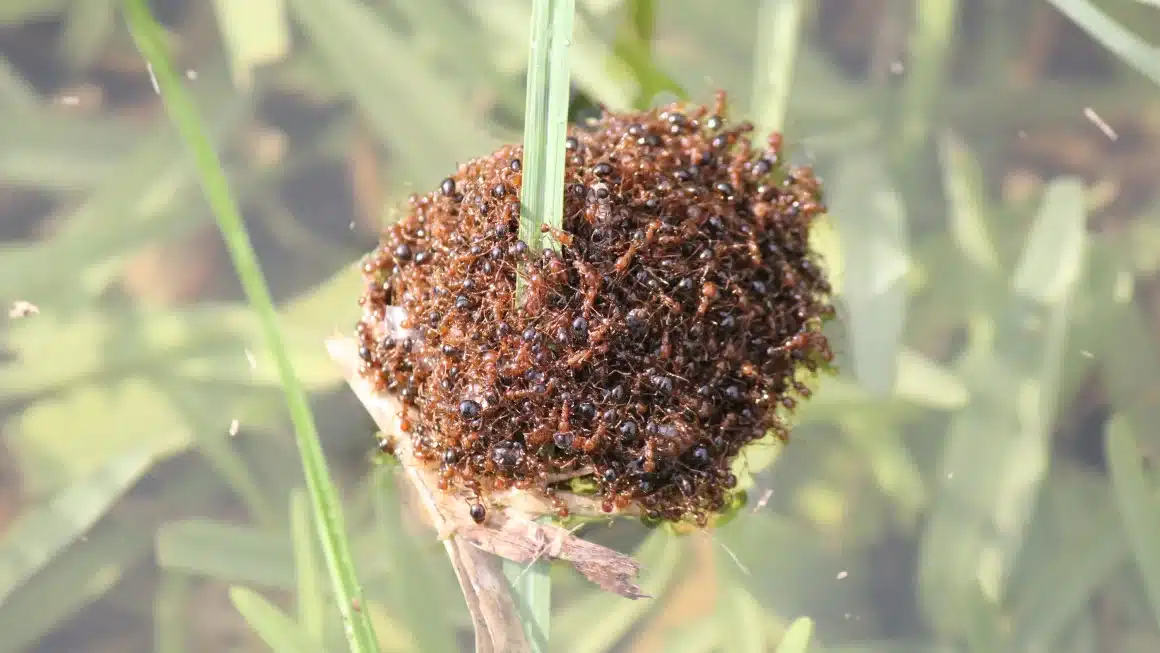Science
How Deadly Fire Ants Are Surviving Australian Floods: A Perilous Journey

Red fire ants are constructing rafts to travel on flood waters in Queensland, northeastern Australia, as extreme weather threatens the highly invasive species’ expansion across the country.
“The recent heavy rainfall and wild weather in the region could accelerate the spread of fire ants, one of the world’s worst invasive species,” Reece Pianta, advocacy manager at Australia’s Invasive Species Council (ISC), said in a statement Tuesday.
“Fire ants are more active before or after rain, and they can form large floating rafts that move with water currents to establish footholds in new areas,” Pianta said, advising locals to be vigilant. The ISC posted a video on social media showing fire ants migrating in raft formation.
“It’s incredibly simple to do your part. Just snap a picture of any unusual ants and report them,” he said.
How Deadly Fire Ants Are Surviving Australian Floods: A Perilous Journey
Queensland has experienced severe weather and flooding in recent weeks. Last month, the remnants of Tropical Cyclone Jasper poured severe rains to Cairns, cutting the city off. Flooding also stranded many of the more than 150,000 residents on their rooftops.
According to ISC modelling, fire ants will spread to “every corner of Australia” if the Queensland outbreak is uncontrolled.
The ISC stated that it just obtained a 70 million Australian dollar ($46 million) four-year commitment from Victoria to support the national fire ant eradication effort. Pianta believes eradication is still attainable.
Solenopsis invicta, a red imported fire ant native to South America, is an omnivorous species that damages crops and livestock. Its deadly sting causes pustules and allergic responses and can be fatal to humans. Over the past century, it has expanded over the United States, Mexico, the Caribbean, China, and Australia. It made its maiden appearance in Europe last year.
How Deadly Fire Ants Are Surviving Australian Floods: A Perilous Journey
Australia’s first fire ant outbreak occurred in 2001, according to the ISC. According to the statement, the country has brought seven infestations under control, stretching from Queensland’s capital, Brisbane, to the border with the neighbouring state of New South Wales (NSW), to first contain and then eradicate the infestations.
However, in November 2023, the ants were discovered in New South Wales, raising concerns that they could spread to the Murray-Darling river basin and out of control.
At the time, Tara Moriarty, the Minister for Agriculture in New South Wales, stated that “red imported fire ant are a terrible invasive pest, which cause serious social, economic, and environmental harm.”
How Deadly Fire Ants Are Surviving Australian Floods: A Perilous Journey
“Our teams are focused on limiting further spread, and encouraging reporting and compliance through a targeted communications campaign,” she said.
Red ants can spread swiftly, but human activities, such as cargo containers or shipments of potted plants or soil, usually exacerbate an infestation.
SOURCE – (CNN)
































